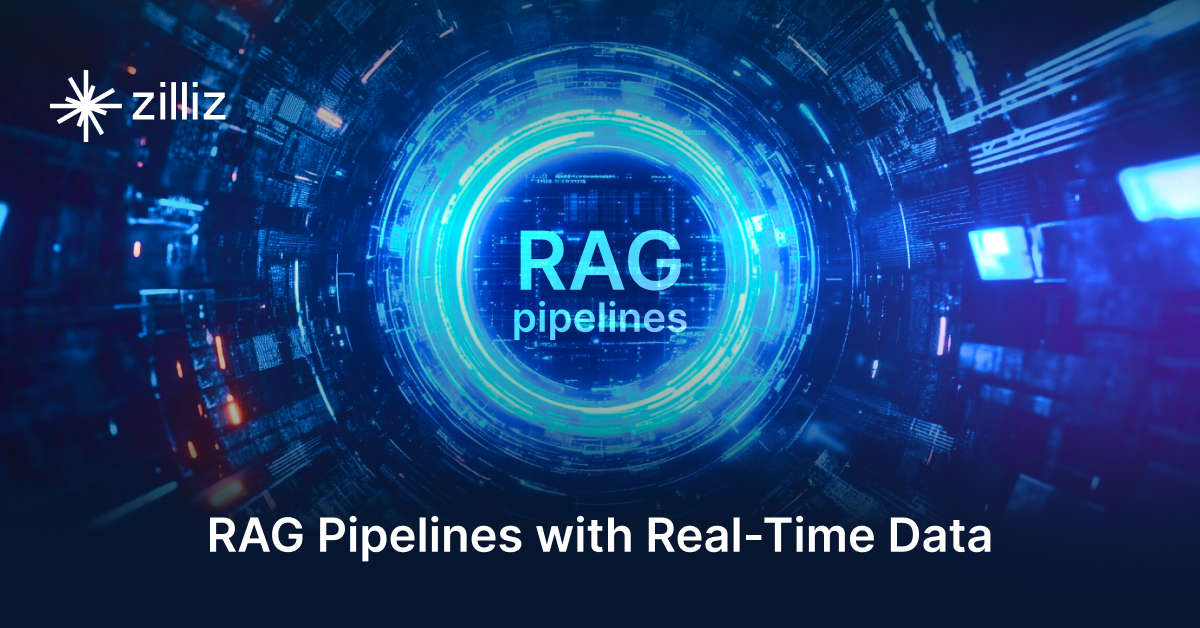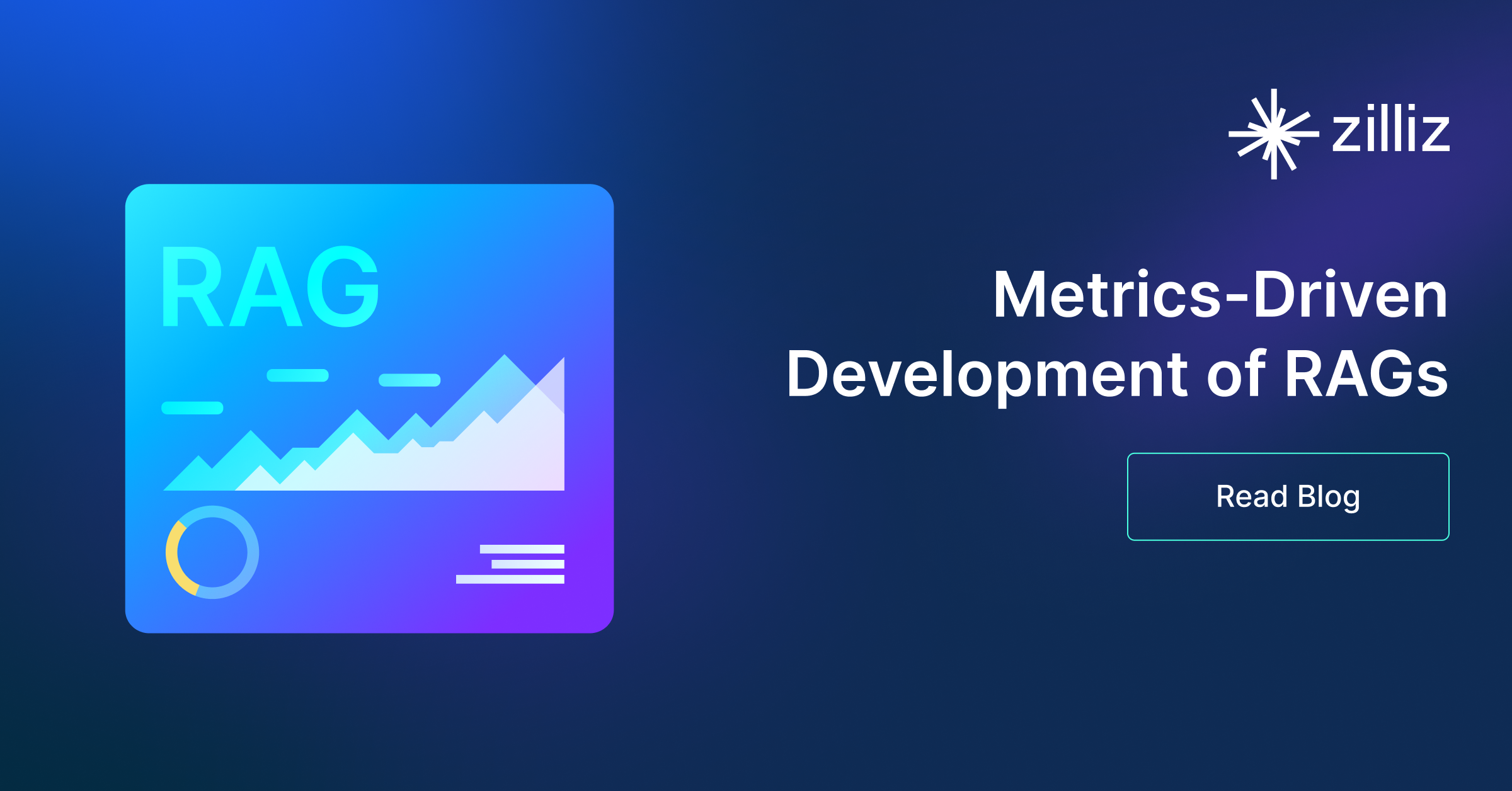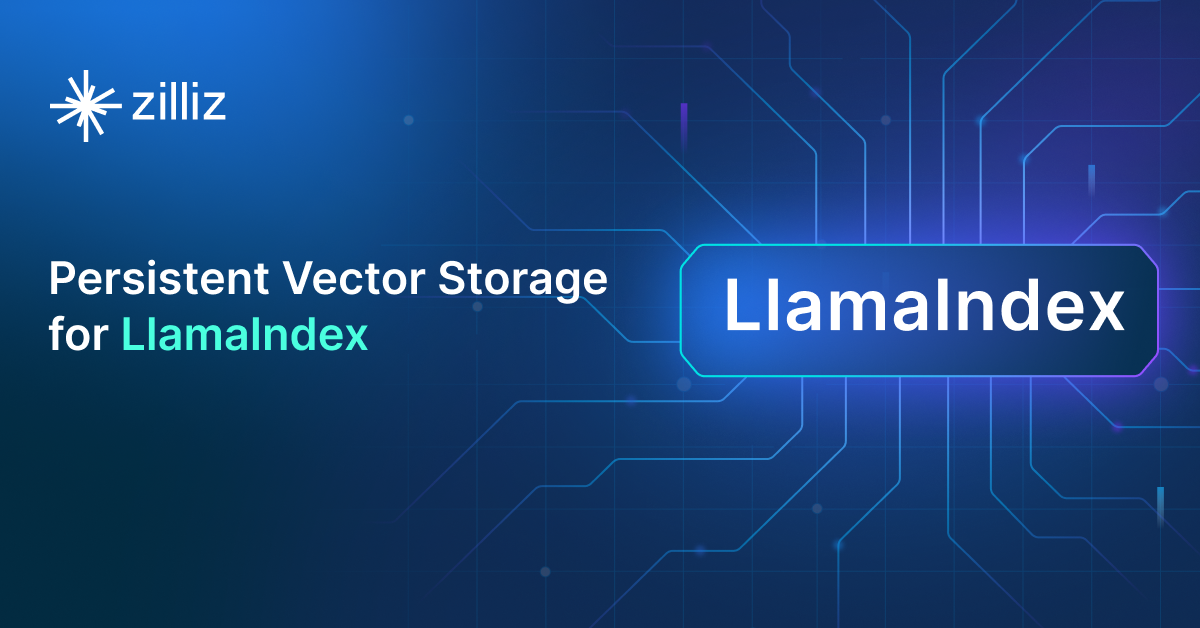Build RAG Chatbot with LangChain, Milvus, AWS Bedrock Claude 3.5 Haiku, and NVIDIA nv-embed-v1
Introduction to RAG
Retrieval-Augmented Generation (RAG) is a game-changer for GenAI applications, especially in conversational AI. It combines the power of pre-trained large language models (LLMs) like OpenAI’s GPT with external knowledge sources stored in vector databases such as Milvus and Zilliz Cloud, allowing for more accurate, contextually relevant, and up-to-date response generation. A RAG pipeline usually consists of four basic components: a vector database, an embedding model, an LLM, and a framework.
Key Components We'll Use for This RAG Chatbot
This tutorial shows you how to build a simple RAG chatbot in Python using the following components:
- LangChain: An open-source framework that helps you orchestrate the interaction between LLMs, vector stores, embedding models, etc, making it easier to integrate a RAG pipeline.
- Milvus: An open-source vector database optimized to store, index, and search large-scale vector embeddings efficiently, perfect for use cases like RAG, semantic search, and recommender systems. If you hate to manage your own infrastructure, we recommend using Zilliz Cloud, which is a fully managed vector database service built on Milvus and offers a free tier supporting up to 1 million vectors.
- AWS Bedrock Claude 3.5 Haiku: An advanced model from Anthropic, Claude 3.5 is designed for scalable natural language processing within AWS Bedrock. It offers enhanced reasoning and contextual understanding, making it well-suited for applications such as conversational agents, content generation, and data analysis, delivering both speed and accuracy in enterprise settings.
- NVIDIA nv-embed-v1: This model specializes in generating high-quality embeddings for various applications, such as image and text processing. Its strength lies in efficiently capturing semantic similarities and contextual information. Ideal for tasks like semantic search, recommendation systems, and natural language understanding, it facilitates advanced AI solutions across diverse industries.
By the end of this tutorial, you’ll have a functional chatbot capable of answering questions based on a custom knowledge base.
Note: Since we may use proprietary models in our tutorials, make sure you have the required API key beforehand.
Step 1: Install and Set Up LangChain
%pip install --quiet --upgrade langchain-text-splitters langchain-community langgraph
Step 2: Install and Set Up AWS Bedrock Claude 3.5 Haiku
pip install -qU "langchain[aws]"
# Ensure your AWS credentials are configured
from langchain.chat_models import init_chat_model
llm = init_chat_model("anthropic.claude-3-5-haiku-20241022-v1:0", model_provider="bedrock_converse")
Step 3: Install and Set Up NVIDIA nv-embed-v1
pip install -qU langchain-nvidia-ai-endpoints
import getpass
import os
if not os.environ.get("NVIDIA_API_KEY"):
os.environ["NVIDIA_API_KEY"] = getpass.getpass("Enter API key for NVIDIA: ")
from langchain_nvidia_ai_endpoints import NVIDIAEmbeddings
embeddings = NVIDIAEmbeddings(model="nvidia/nv-embed-v1")
Step 4: Install and Set Up Milvus
pip install -qU langchain-milvus
from langchain_milvus import Milvus
vector_store = Milvus(embedding_function=embeddings)
Step 5: Build a RAG Chatbot
Now that you’ve set up all components, let’s start to build a simple chatbot. We’ll use the Milvus introduction doc as a private knowledge base. You can replace it with your own dataset to customize your RAG chatbot.
import bs4
from langchain import hub
from langchain_community.document_loaders import WebBaseLoader
from langchain_core.documents import Document
from langchain_text_splitters import RecursiveCharacterTextSplitter
from langgraph.graph import START, StateGraph
from typing_extensions import List, TypedDict
# Load and chunk contents of the blog
loader = WebBaseLoader(
web_paths=("https://milvus.io/docs/overview.md",),
bs_kwargs=dict(
parse_only=bs4.SoupStrainer(
class_=("doc-style doc-post-content")
)
),
)
docs = loader.load()
text_splitter = RecursiveCharacterTextSplitter(chunk_size=1000, chunk_overlap=200)
all_splits = text_splitter.split_documents(docs)
# Index chunks
_ = vector_store.add_documents(documents=all_splits)
# Define prompt for question-answering
prompt = hub.pull("rlm/rag-prompt")
# Define state for application
class State(TypedDict):
question: str
context: List[Document]
answer: str
# Define application steps
def retrieve(state: State):
retrieved_docs = vector_store.similarity_search(state["question"])
return {"context": retrieved_docs}
def generate(state: State):
docs_content = "\n\n".join(doc.page_content for doc in state["context"])
messages = prompt.invoke({"question": state["question"], "context": docs_content})
response = llm.invoke(messages)
return {"answer": response.content}
# Compile application and test
graph_builder = StateGraph(State).add_sequence([retrieve, generate])
graph_builder.add_edge(START, "retrieve")
graph = graph_builder.compile()
Test the Chatbot
Yeah! You've built your own chatbot. Let's ask the chatbot a question.
response = graph.invoke({"question": "What data types does Milvus support?"})
print(response["answer"])
Example Output
Milvus supports various data types including sparse vectors, binary vectors, JSON, and arrays. Additionally, it handles common numerical and character types, making it versatile for different data modeling needs. This allows users to manage unstructured or multi-modal data efficiently.
Optimization Tips
As you build your RAG system, optimization is key to ensuring peak performance and efficiency. While setting up the components is an essential first step, fine-tuning each one will help you create a solution that works even better and scales seamlessly. In this section, we’ll share some practical tips for optimizing all these components, giving you the edge to build smarter, faster, and more responsive RAG applications.
LangChain optimization tips
To optimize LangChain, focus on minimizing redundant operations in your workflow by structuring your chains and agents efficiently. Use caching to avoid repeated computations, speeding up your system, and experiment with modular design to ensure that components like models or databases can be easily swapped out. This will provide both flexibility and efficiency, allowing you to quickly scale your system without unnecessary delays or complications.
Milvus optimization tips
Milvus serves as a highly efficient vector database, critical for retrieval tasks in a RAG system. To optimize its performance, ensure that indexes are properly built to balance speed and accuracy; consider utilizing HNSW (Hierarchical Navigable Small World) for efficient nearest neighbor search where response time is crucial. Partitioning data based on usage patterns can enhance query performance and reduce load times, enabling better scalability. Regularly monitor and adjust cache settings based on query frequency to avoid latency during data retrieval. Employ batch processing for vector insertions, which can minimize database lock contention and enhance overall throughput. Additionally, fine-tune the model parameters by experimenting with the dimensionality of the vectors; higher dimensions can improve retrieval accuracy but may increase search time, necessitating a balance tailored to your specific use case and hardware infrastructure.
AWS Bedrock Claude 3.5 Haiku optimization tips
Claude 3.5 Haiku on AWS Bedrock is an optimized version of Haiku with improved efficiency and response quality. Enhance performance by using high-precision vector embeddings and filtering irrelevant data before retrieval. Keep prompts brief yet structured to improve clarity and token efficiency. Adjust temperature between 0.1 and 0.3 to balance accuracy and variation. Utilize AWS Bedrock’s low-latency infrastructure to maintain responsiveness in real-time applications. Implement API request batching for large-scale workloads and cache frequent queries to optimize cost and performance. When deploying multiple models, use Haiku for fast responses while reserving larger models for deep analytical tasks.
NVIDIA nv-embed-v1 Optimization Tips
To optimize the NVIDIA nv-embed-v1 within a Retrieval-Augmented Generation (RAG) setup, ensure you fine-tune your models with domain-specific data to improve relevance and accuracy. Utilize mixed precision training to speed up training times and reduce memory usage. Implement efficient batching techniques to handle larger datasets, maximizing throughput. Leverage NVIDIA’s TensorRT for inference optimization, enabling faster response times during retrieval. Lastly, monitor GPU utilization and experiment with various hyperparameters, such as learning rates and dropout rates, for optimal performance tailored to your application needs.
By implementing these tips across your components, you'll be able to enhance the performance and functionality of your RAG system, ensuring it’s optimized for both speed and accuracy. Keep testing, iterating, and refining your setup to stay ahead in the ever-evolving world of AI development.
RAG Cost Calculator: A Free Tool to Calculate Your Cost in Seconds
Estimating the cost of a Retrieval-Augmented Generation (RAG) pipeline involves analyzing expenses across vector storage, compute resources, and API usage. Key cost drivers include vector database queries, embedding generation, and LLM inference.
RAG Cost Calculator is a free tool that quickly estimates the cost of building a RAG pipeline, including chunking, embedding, vector storage/search, and LLM generation. It also helps you identify cost-saving opportunities and achieve up to 10x cost reduction on vector databases with the serverless option.
 Calculate your RAG cost
Calculate your RAG cost
What Have You Learned?
By diving into this tutorial, you’ve unlocked the power of building a RAG system from the ground up using cutting-edge tools! You learned how LangChain acts as the glue that holds everything together—orchestrating workflows, connecting components, and simplifying complex tasks like document loading and retrieval. With Milvus as your vector database, you saw how blazing-fast similarity search works its magic, efficiently organizing and querying embeddings to find the most relevant context for your prompts. AWS Bedrock’s Claude 3.5 Haiku became your go-to LLM powerhouse, balancing speed and intelligence to generate human-like responses while keeping costs low. And let’s not forget NVIDIA’s nv-embed-v1, which transformed your raw text into rich, semantic vectors, ensuring your system understands nuance and intent like never before. Together, these tools formed a seamless pipeline: ingesting data, embedding it, storing it intelligently, and retrieving insights with precision—all while you controlled the flow with LangChain’s flexible framework.
But wait—there’s more! You also picked up pro tips for optimizing your RAG system, like tuning chunk sizes for better retrieval and balancing accuracy with computational efficiency. The free RAG cost calculator added a practical edge, helping you estimate expenses and make informed decisions as you scale. Now that you’ve seen how these pieces fit together, imagine the possibilities: custom chatbots, research assistants, or enterprise knowledge bases tailored to your needs. You’re equipped not just to follow tutorials but to innovate. So what’s next? Start experimenting! Tweak parameters, swap models, or integrate new data sources. The tools are in your hands, and the AI landscape is your playground. Go build something awesome—the future of intelligent applications is yours to shape! 🚀
Further Resources
🌟 In addition to this RAG tutorial, unleash your full potential with these incredible resources to level up your RAG skills.
- How to Build a Multimodal RAG | Documentation
- How to Enhance the Performance of Your RAG Pipeline
- Graph RAG with Milvus | Documentation
- How to Evaluate RAG Applications - Zilliz Learn
- Generative AI Resource Hub | Zilliz
We'd Love to Hear What You Think!
We’d love to hear your thoughts! 🌟 Leave your questions or comments below or join our vibrant Milvus Discord community to share your experiences, ask questions, or connect with thousands of AI enthusiasts. Your journey matters to us!
If you like this tutorial, show your support by giving our Milvus GitHub repo a star ⭐—it means the world to us and inspires us to keep creating! 💖
- Introduction to RAG
- Key Components We'll Use for This RAG Chatbot
- Step 1: Install and Set Up LangChain
- Step 2: Install and Set Up AWS Bedrock Claude 3.5 Haiku
- Step 3: Install and Set Up NVIDIA nv-embed-v1
- Step 4: Install and Set Up Milvus
- Step 5: Build a RAG Chatbot
- Optimization Tips
- RAG Cost Calculator: A Free Tool to Calculate Your Cost in Seconds
- What Have You Learned?
- Further Resources
- We'd Love to Hear What You Think!
Content
Vector Database at Scale
Zilliz Cloud is a fully-managed vector database built for scale, perfect for your RAG apps.
Try Zilliz Cloud for Free


